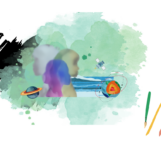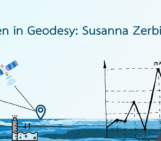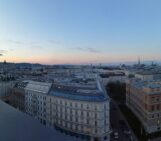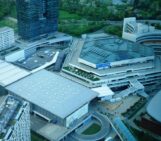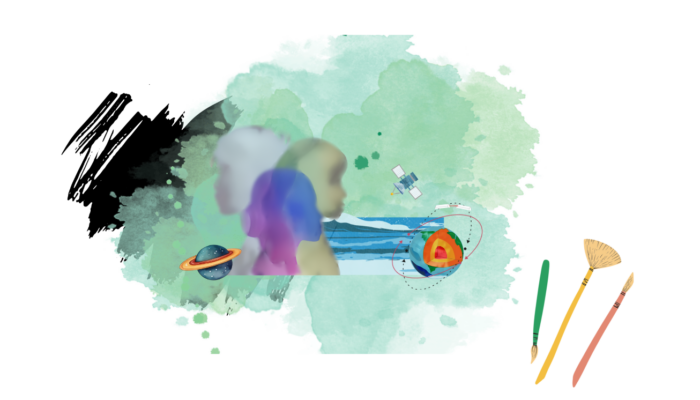
Researchers working in STEM fields who also belong to a minority group face more challenges than their more privileged colleagues. Take Maryam Mirzakhani for instance; she was the first woman and the first Iranian to receive the Fields Medal. But along that path, she quietly overcame a lot of barriers on her journey- from being a child during the Iran-Iraq war to educational inequalities and the unique challenges of being a woman in mathematics [article]. Being the first in her field carried its own weight, and it’s bittersweet that her story gained widespread recognition only after her passing. She became a role model. For many, the path to being a scientist let alone being acknowledged as one is far from straightforward, especially when role models are missing. As social beings, our beliefs of what we can become or achieve and where we belong are heavily shaped by the representation of other people who look like us.
In geodesy, too, the image of the “typical geodesist” remains narrow—a legacy shaped by generations who, perhaps unintentionally, have made the field feel exclusive. Today we are talking to a geodesist whose journey represents a refreshing break from that mould. Kiana (Sedigheh) Karimi is a PhD student at the University of Twente, and also part of the Geodesy ECS team.
– by the editors
Note: While we want to capture the diversity in the geodetic community and illustrate how it enriches our field as a whole, we need to remember that reports of personal experiences can come with a certain cost for the individual. Hence, throughout this series, we will only talk about things to the extent our interviewees feel comfortable sharing.
Getting into university
Becoming a geodesist in Iran, particularly as a woman, is an ups-and-down road. As a first step, you should achieve a high rank in the university entrance exam held among all students throughout the country. Since there is limited capacity for acceptance into universities, it is highly competitive. Personally, I achieved a good rank on the exam and was allowed to choose any field of engineering. I ended up studying Survey engineering to become a geodesist. This path can be challenging because Survey engineering is a set of physical hardships for women in Iran due to a combination of cultural, societal and institutional factors.
Teamwork
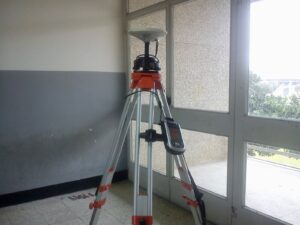
Figure 1: A GPS antenna on a tripod used for fieldwork during Kiana’s bachelor’s program at the Babol Noshirvani University of Technology (image by Kiana Karimi).
Fieldwork in Survey engineering involves practical training with heavy equipment like cameras and surveying instruments, which are essential for measuring land areas and heights. This equipment is often heavy and difficult to carry, making outdoor surveys physically demanding, especially in remote and unsafe environments. Teamwork is crucial in managing these tasks, as surveyors typically work in groups, relying on colleagues for assistance with carrying instruments and conducting measurements. However, as a woman in Iran, navigating these demands is particularly challenging. Societal norms discourage women from engaging in physically intensive work and collaborating with men, and restrictions on travelling alone to remote areas add another layer of difficulty. Furthermore, job opportunities in this field tend to favour men due to the physical demands of the work, which are often assumed to align better with men’s physical features. The male-dominant nature of the field in Iran further isolates women. For example, I sometimes found myself the only woman in some of my classes during my bachelor’s, which limited peer support, made it challenging to find teammates for group work and reduced mentorship opportunities.
Travelling and climate
In addition, the nature of the job requires travelling to various locations, from urban to rural places. Iran has a diverse landscape including villages in mountainous regions like foothills, forests, vast open lands, deprived areas, etc. Consequently, for fieldwork, you need to travel to places that can be hard to access and lack infrastructure.
Travelling like this can be especially tough for women. Travelling alone can be risky since public transportation isn’t always safe or reliable, and many roads to remote areas aren’t up to standard. In addition, in some regions of Iran, the traditional culture makes it difficult for a woman to travel and work alone.
Iran’s varying climate adds another layer of complexity. In coastal regions of the Persian Gulf, summer temperatures can soar more than 40°C. Combined with the restrictions on clothing, this makes fieldwork in these areas particularly harsh for women.
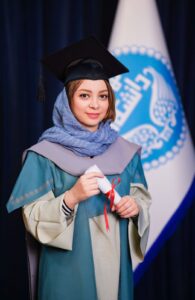
Figure 2: Kiana at her Master’s graduation ceremony in the academic dress of the University of Tehran (image by Kiana Karimi).
Geodesy as a passion
Due to all these challenges, there is a tendency for fewer women to study this field in Iran. However, I stayed motivated and committed to my goal, and I was set on overcoming these challenges.
The first and foremost motivation to be committed to your goal is passion. In my case, the passion for starting Survey engineering and choosing geodesy was deeply rooted in a curiosity about the Earth’s position in the universe, the order of celestial bodies, and the methods used to determine positions through star observations. I realised the impacts of these areas on various aspects of life, from scientific advancements to everyday applications like GPS, which have streamlined numerous tasks. The way geography, astronomy, and technology come together drew me to geodesy. It’s a field full of intellectual challenges and practical importance in helping us understand the world and its place in the universe.
Iran needs geodesists
Geodesy is a relatively new field in Iran, and the country needs experts. However, I wasn’t just motivated by job prospects; I wanted to help advance this field, which has great potential. I want to become an expert in my field to inspire other Iranian women to follow their dreams and positively impact the field. This lack of experts, especially among women, motivates me to help more people get involved in geodesy so that it becomes more inclusive because this field of study can help my country tremendously to understand its geography, resources, and vulnerabilities better. In Iran, we can benefit from it by identifying areas at risk of natural disasters and planning accordingly. By using modern geodetic technologies, we can manage land, water, and energy efficiently and promote sustainable development.
Looking forward
Now, as a geodesist, when I look back and reflect on my journey, the difficulties I faced as a woman have only strengthened my determination. I am proud to be part of a profession that, while challenging, is crucial to the development of infrastructure and land management in Iran. My path wasn’t easy, but it was worth every step.
We would like to thank Kiana for sharing her journey with us and hope that it will inspire others facing similar experiences and challenges. If you are interested in sharing your own story—whether in more detail or briefly, or even anonymously—please reach out to us.
Edited by Bene Aschenneller & Öykü Koç

